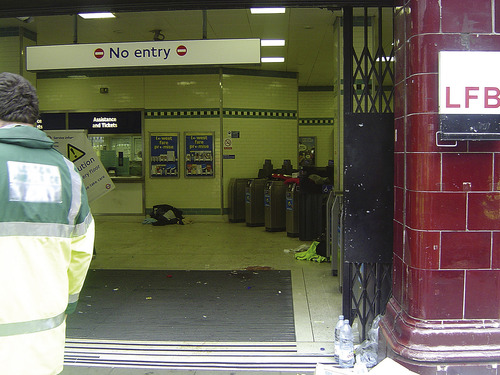CASE 22
 |
Incident
The tasking agency has received reports of multiple persons collapsed in an underground train station during evening ‘rush hour’. No other information is available. The PHR team is activated to assess the situation.
You are the second medical team on scene, a land ambulance having already arrived. A crew member tells you his colleagues went down the escalator 5 minutes ago and reported ‘several collapsed persons’. The remaining crewman has called for the Fire & Rescue Service.
Relevant information
▪ Aircraft: Unavailable. Rapid response road vehicle
▪ Ground resources: Fire & Rescue Service en route. One land ambulance on scene
▪ Retrieval options: Three general hospitals approximately 20 minutes by road
▪ Other: Monday 17:30. Ambient Conditions: Windy 15°C (59°F)
Questions
22.1 What are your initial thoughts about this scene?
22.3 After the arrival of more resources, what are the key points relevant to the medical management of a chemical incident (or any chemical biological radiological nuclear [CBRN] incident)?
Discussion
22.1 With the information given, the traditional pre-hospital plan stops at safety. Several immediate questions should spring to mind as outlined and discussed below.
Is the scene safe?
This scene cannot be assumed to be safe. There are several warning signs but most conspicuous is the total absence of people. Where are the commuters, the staff etc? Some emergency services have adopted a ‘3 strikes’ rule. This is a technique to alert staff to potential CBRN incidents in public places and applies where there is no obvious cause for the collapsed persons (e.g. trauma):
• One person collapsed – approach as normal.
• Two persons collapsed – approach with extreme caution.
< div class='tao-gold-member'>
Only gold members can continue reading. Log In or Register to continue
Stay updated, free articles. Join our Telegram channel

Full access? Get Clinical Tree








